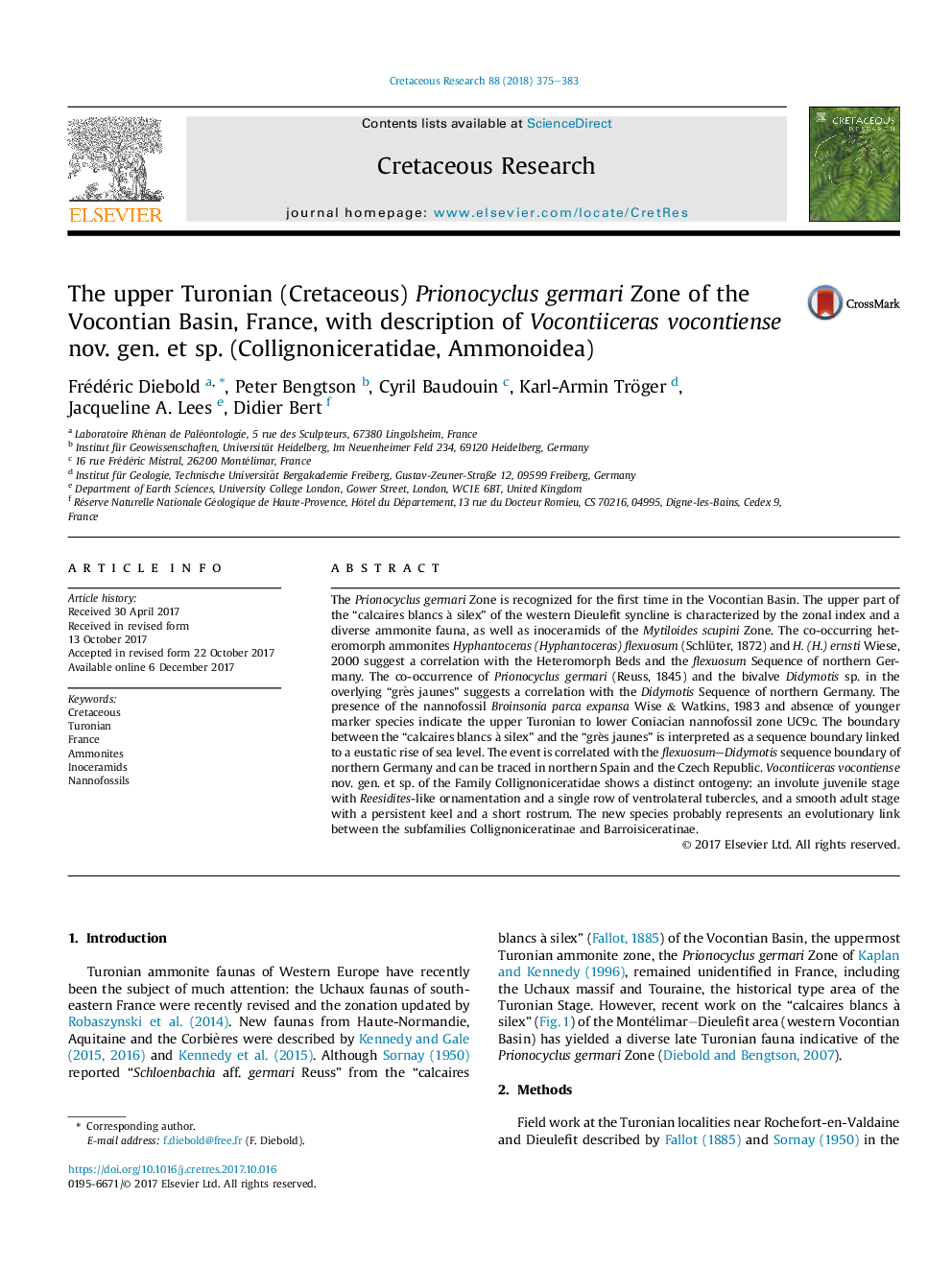| کد مقاله | کد نشریه | سال انتشار | مقاله انگلیسی | نسخه تمام متن |
|---|---|---|---|---|
| 8916279 | 1642035 | 2018 | 9 صفحه PDF | دانلود رایگان |
عنوان انگلیسی مقاله ISI
The upper Turonian (Cretaceous) Prionocyclus germari Zone of the Vocontian Basin, France, with description of Vocontiiceras vocontiense nov. gen. et sp. (Collignoniceratidae, Ammonoidea)
دانلود مقاله + سفارش ترجمه
دانلود مقاله ISI انگلیسی
رایگان برای ایرانیان
کلمات کلیدی
موضوعات مرتبط
مهندسی و علوم پایه
علوم زمین و سیارات
فسیل شناسی
پیش نمایش صفحه اول مقاله

چکیده انگلیسی
The Prionocyclus germari Zone is recognized for the first time in the Vocontian Basin. The upper part of the “calcaires blancs à silex” of the western Dieulefit syncline is characterized by the zonal index and a diverse ammonite fauna, as well as inoceramids of the Mytiloides scupini Zone. The co-occurring heteromorph ammonites Hyphantoceras (Hyphantoceras) flexuosum (Schlüter, 1872) and H. (H.) ernsti Wiese, 2000 suggest a correlation with the Heteromorph Beds and the flexuosum Sequence of northern Germany. The co-occurrence of Prionocyclus germari (Reuss, 1845) and the bivalve Didymotis sp. in the overlying “grès jaunes” suggests a correlation with the Didymotis Sequence of northern Germany. The presence of the nannofossil Broinsonia parca expansa Wise & Watkins, 1983 and absence of younger marker species indicate the upper Turonian to lower Coniacian nannofossil zone UC9c. The boundary between the “calcaires blancs à silex” and the “grès jaunes” is interpreted as a sequence boundary linked to a eustatic rise of sea level. The event is correlated with the flexuosum-Didymotis sequence boundary of northern Germany and can be traced in northern Spain and the Czech Republic. Vocontiiceras vocontiense nov. gen. et sp. of the Family Collignoniceratidae shows a distinct ontogeny: an involute juvenile stage with Reesidites-like ornamentation and a single row of ventrolateral tubercles, and a smooth adult stage with a persistent keel and a short rostrum. The new species probably represents an evolutionary link between the subfamilies Collignoniceratinae and Barroisiceratinae.
ناشر
Database: Elsevier - ScienceDirect (ساینس دایرکت)
Journal: Cretaceous Research - Volume 88, August 2018, Pages 375-383
Journal: Cretaceous Research - Volume 88, August 2018, Pages 375-383
نویسندگان
Frédéric Diebold, Peter Bengtson, Cyril Baudouin, Karl-Armin Tröger, Jacqueline A. Lees, Didier Bert,